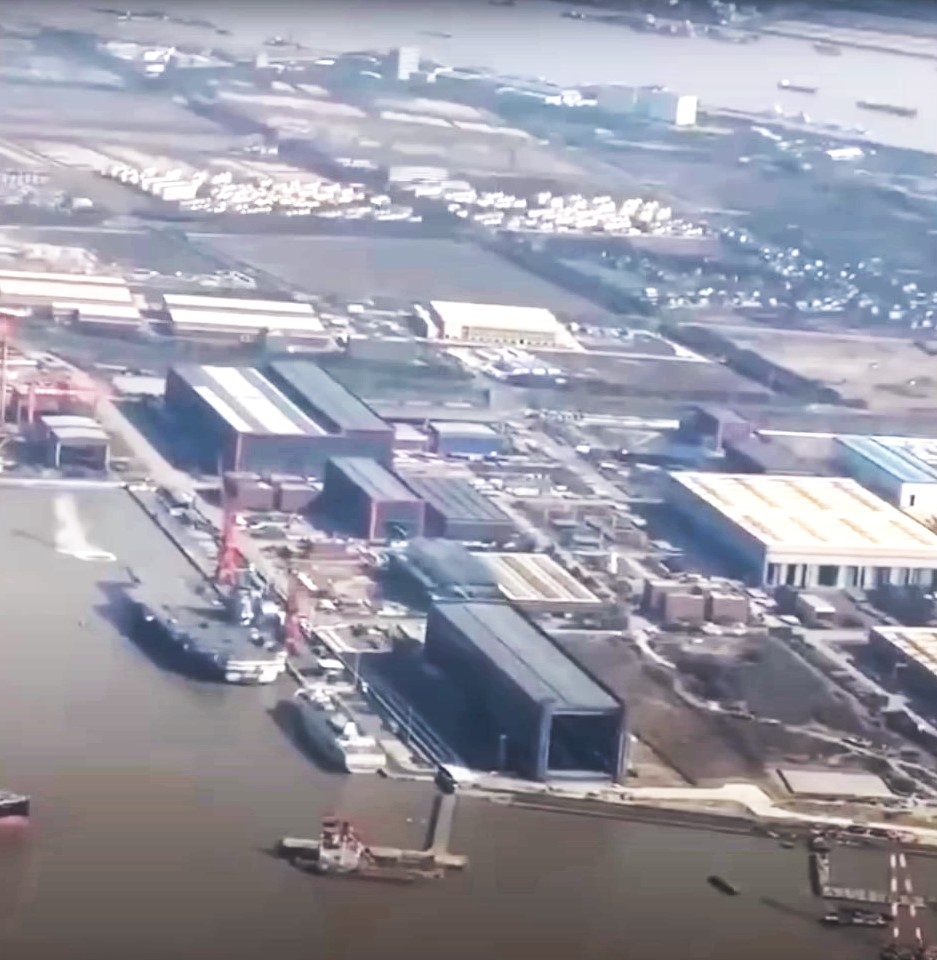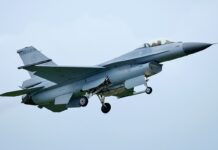Video imagery has emerged showing that Fujian, China’s first Type 003-class aircraft carrier, has been conducting dead-load launch testing of its electromagnetic catapult.
A video clip originally loaded onto the Chinese social media channel Weibo on 26 November 2023 shows an aerial view of the carrier with a heavy splash off its bow made by the launching of a test sled from its catapult, which is a Chinese version of the Electromagnetic Aircraft Launch System (EMALS) used initially by the US Navy carrier USS Gerald R Ford.
Fujian was launched on 17 June 2022 and is currently being fitted out at Jiangnan Shipyard on Changxing Island, adjacent to the city of Shanghai. As explained by the Eurasia Naval Insight vlog on YouTube, Jiangnan Shipyard is on the flightpath of passenger aircraft coming in to land at Shanghai International Airport, which allows Chinese naval enthusiasts to keep track of progress there.
The dead-load launch testing is an essential phase in the commissioning of the electromagnetic catapult on Fujian before it is tested with real shipborne fighter aircraft.

China’s previous two aircraft carriers, Liaoning and Shandong, have ‘ski-ramp’ decks rather than catapults for take-offs, as Liaoning began its life as a Soviet-designed Kuznetsov-class aircraft carrier and Shandong, as China’s first domestically produced carrier, was built to the same design.
Carriers with catapult-assisted take-off but arrested recovery (CATOBAR) systems can launch fighters with heavier payloads or larger aircraft types such as airborne early warning and control platforms like the US E-2 Hawkeye.
Before USS Gerald R Ford was commissioned on 22 July 2017 all previous US carriers were fitted with steam catapults, but China has opted to immediately adopt electromagnetic launch technology in its first indigenously designed aircraft carrier.
Although steam catapult systems on carriers have been very reliable, systems like EMALS are more efficient, take up less space and offer greater load control. That said, the reliability of EMALS and the Advanced Arresting Gear (AAG) system on USS Gerald R Ford have been disappointing in their initial years of operation.
A June 2022 report by the US Government Accountability Office stated that the US Navy “continues to struggle with the reliability of the electromagnetic aircraft launch system and advanced arresting gear needed to meet requirements to rapidly deploy aircraft” and indicated that the navy did not expect EMALS and AAG to reach their full reliability goals until the 2030s.
It will therefore be interesting to see how long it takes China to perfect its own versions of those systems.











